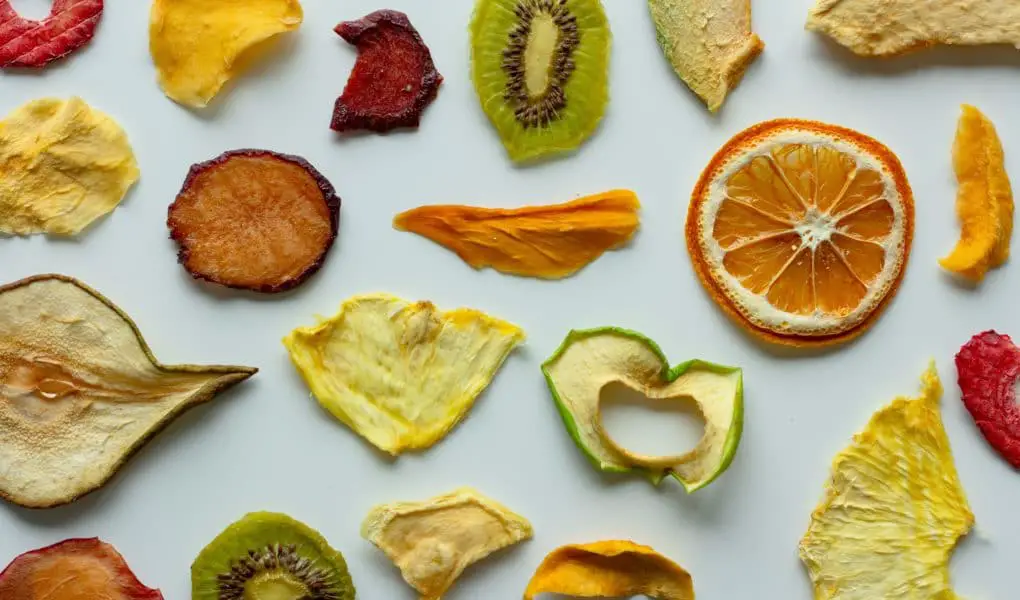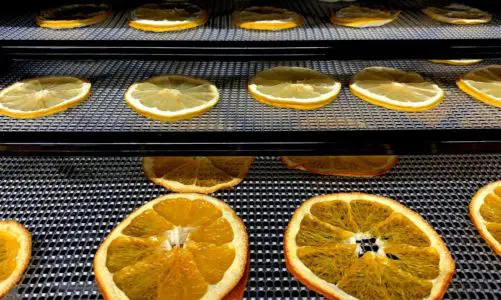Drying fruits at home and storing them for months or even years to come can be a very satisfying and rewarding experience. The process of drying fruit does not have to be a complicated or expensive one at all. All fruits, regardless of kind, require the same few easy steps, such as preparation, cutting, drying, and storage. The time it takes to dry may vary, however, depending on the kind of fruit and moisture content. This process may take anything from 7 to 15 hours for apples or between 20 to 25 hours for figs. A question often asked is how to dehydrate fruit quickly. In this article, we give some helpful tips to consider which will help speed up fruit dehydration.
The basics of dehydrating popular fruits.
Preparation
- Rinse fruits well to ensure they are clean and free from any pesticides.
- Cut or peel the skin off. Some skins, like that of citrus fruits, are edible and do not have to be removed.
- Slice fruit up into slices. Depending on the size and shape of the fruit, you may have to cut them differently.
Pre-Treatment
Bath fruit slices in a medium-sized bowl containing water and lemon juice. Alternatively, lightly spray the fruit pieces with diluted lemon juice. This helps preserve the fruit and keeps them from turning brown during the dehydration process. Adding half a teaspoon of dissolved ascorbic acid instead of lemon juice will do the trick too. Scoop fruit out and drain.
Dehydration
There are 2 common methods to dehydrate fruits. They can be dried naturally in the heat of the sun or through an oven or food dehydration machine. Depending on the method chosen, the fruit will dry at different times. This can take anything from a few hours to a full day. Check-in every few hours to monitor the progress. With some dehydrators, it is necessary to rotate the trays and/or flip the fruit slices for even drying.
How to speed up dehydration of fruit.
The following tips are useful when you need to dehydrate fruit quickly. Following these simple tips will help speed up the time it takes to dehydrate your favorite fruits.
- Choose fruits that have a faster drying time such as strawberries, apples, pears and grapes.
- The thinner the better. Depending on the type of fruit, try and slice as thin as possible for faster drying.
- Apple, oranges, and pears can be cut into ¼ inch slices.
- Mangoes are usually sliced in long thin strips and bananas into round chips.
- Pineapples are cut into discs, which you can then again cut into 2 halves.
- Grapes and certain berries because of their small size can be dehydrated skin and all. Strawberries are usually cut in half or in thinner slices.
- Bananas are cut into smaller bite-sized chips. Thin enough not to end up chewy.
- Melons should not be cut too thin, otherwise, they become too frail during dehydration. A ¼ inch thick is good. Pat the pieces dry with a paper or cloth towel to remove excess moisture.
- Mangoes and peaches, which are pulp fruits are difficult to cut uniformly. Slice them into strips for easy drying.
- Make sure that the fruit pieces you want to dehydrate is completely dry. This will speed up the drying time.
- Arrange the slices so that they do not touch. Overlapping them and over-filling up the trays will slow down the drying time.
- The higher the temperature the faster fruits will dehydrate. Be aware though that higher temperatures come with risk and may result in uneven drying. You want to avoid ending up with a harder outside and a softer inside. Follow the manufacturer’s guidelines for ideal temperatures.
Using the right food dehydrator
Invest in the right dehydrator for the fastest drying. Not all dehydrators are equal. They vary in capacity, size, and automation. Smaller units with a lower wattage may save on energy costs, but the food takes longer to dehydrate. Higher wattage dehydrators are more powerful and will shorten the drying time for fruits, but come at a higher price tag. Units with fans and heaters that are rear-mounted, dehydrate fruit better and faster than those with heaters and fans on the bottom or top.
Choose the correct unit for your specific needs. For running a small business, higher-end units with more power and capacity will help dehydrate fruit quickly. The Excalibur dehydrator is an excellent choice with fans and heaters mounted at the back for faster drying time.
See our recommendations for TOP dehydrators at the end of this article
V
V
Using the sun’s heat
Drying fruit naturally outside using the sun’s heat is popular amongst many homesteaders and those enjoying off-grid living. Drying fruit naturally generally takes longer, which is why people prefer electric dehydrators. For sun-powered food drying, we suggest the use of reflectors or foil sheets to help dehydrate fruit quickly. Build your own unit, big or small using materials such as wood, glass, perspex, or glass. A quick search online will reveal quite a number of DIY dehydrator projects with step-by-step instructions.
Choose fruits that dry faster.
The fruits listed below require the shortest times to dehydrate. These approximate times are useful when choosing fruits that dry quicker than others. Strawberries, grapes, and apples have the shortest drying times, while apricots and figs take the longest.
Strawberries (5 – 15 hours)
Grapes (6 – 10 hours)
Apples (7 – 15 hours)
Pears (8 – 10 hours)
Peaches ( 8 – 12 hours)
Mango ( 8-12 hours)
Kiwi (8 – 12 hours)
Peaches (8 – 16 hours)
Cranberries (10 – 12 hours)
Persimmons (10 – 19 hours)
Pineapples (12 – 16 hours)
Blueberries (12 – 20 hours)
Cherries (13 – 21 hours)
Oranges (15 – 24 hours)
Figs (20 – 25 hours)
Apricots (20 – 28 hours)
Last thoughts on how to dehydrate fruit quickly.
Dehydrating fruits is not a quick process, but can certainly be sped up following some of the tips mentioned in this article. Perhaps the single most important aspect of dehydrating food quickly comes down to the choice of dehydration unit itself. For a small home business, investing in a powerful dehydrator with ample capacity makes sense. For a beginner, a smaller unit with lower wattage is ideal to start off with, but the downside is longer drying times.
Here is our list of TOP units that dehydrate fruit quickly:
- Magic Mill Food Dehydrator Machine (1000 Watts)
- COSORI Premium Food Dehydrator (600 Watts)
- Excalibur 9-Tray Electric Food Dehydrator (600 Watts)
- NESCO FD-1018A Gardenmaster Pro Food Dehydrator (1000 Watts)
Others enjoyed these too:
Do food dehydrators make food crispy?
5 Essential oils that break rubber bands for hair.
Can you use a dehydrator to dry seeds?
What is Quali-C vitamin C and which brands to choose?
The 6 best vitamin C face washes for brighter skin.
These 10 oxygenating houseplants are natural air filters too.
How does vitamin C help with collagen production?
Affiliate Disclosure: Some of the links that appear on this site are affiliate links. We may receive a small commission when you make a purchase. These commissions help to improve this site and to fund further research. The buyer does not pay any commission whatsoever but is an arrangement between the supplier and this site. Our selection of products is carefully curated and includes only those products we believe in.
Cautionary Note and Disclaimer: Sunny Life Mag is a digital magazine for entertainment. Not any of the products recommended in the articles have been independently tested for safety. Report all health and safety issues related to the products mentioned in articles to the manufacturer and brands directly.
Image credit: k8 via Unsplash




